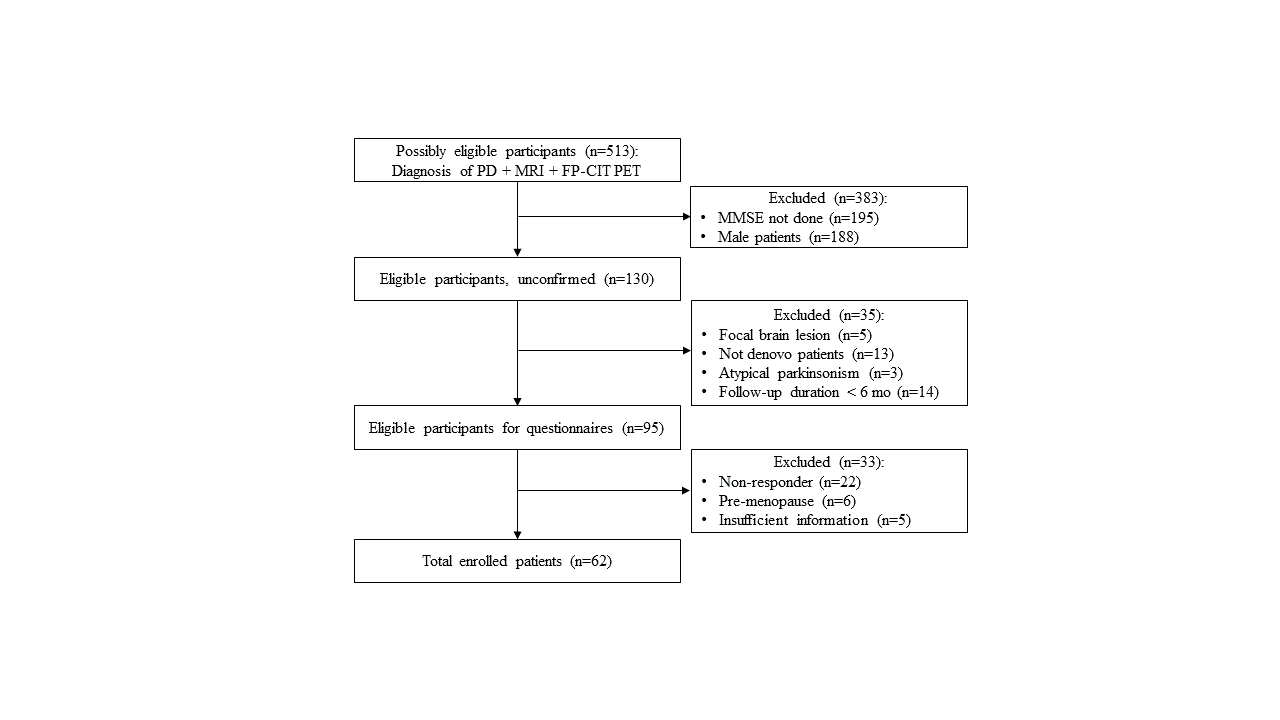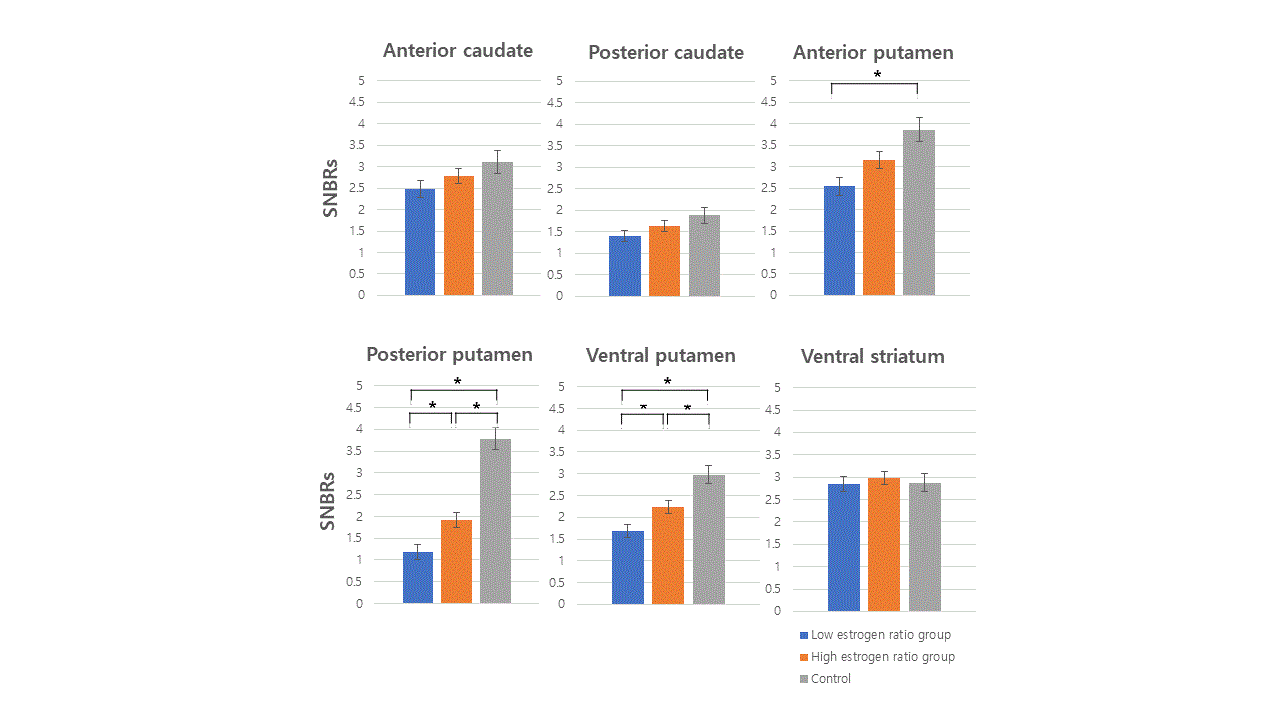Session Information
Date: Tuesday, September 24, 2019
Session Title: Parkinsonisms and Parkinson-Plus
Session Time: 1:45pm-3:15pm
Location: Agora 3 West, Level 3
Objective: To investigate the potential beneficial effects of estrogen on nigrostriatal dopaminergic neuron degeneration in postmenopausal drug-naïve Parkinson’s disease.
Background: Epidemiologic studies have revealed that the prevalence of PD is 1.5-2-fold lower in women than in men, suggesting a possible protective influence of estrogen in predilection to the disease. Experimental evidences suggest that estradiol exerts neuroprotective effects on dopaminergic neurons and promotes dopaminergic activity in the striatum. Until now, the potential beneficial effects of estrogen on nigrostriatal dopaminergic degeneration in patients with PD have not been investigated using in vivo neuroimaging.
Method: Based on the ratio of lifetime estrogen exposure length to the total length of the estrogen exposure and deprivation period, postmenopausal women with drug-naïve Parkinson’s disease were divided into low (n = 31) and high (n = 31) estrogen exposure ratio groups. We performed a comparative analysis of the striatal dopamine transporter (DAT) availability between the two groups. Additionally, we evaluated the longitudinal change in the levodopa equivalent dose per month using a linear mixed model.
Results: The motor symptoms were more severe in the low estrogen exposure ratio group than in the high estrogen exposure ratio group (p = 0.016). PD patients in the two groups had significantly lower DAT availability than did normal controls. When comparing the two groups, Parkinson’s disease patients in the low estrogen exposure ratio group exhibited significantly lower DAT availability in the posterior putamen (p = 0.026) and in the ventral putamen (p = 0.037) than those in the high estrogen exposure ratio group. The estimated monthly levodopa equivalent dose changes were 10.9 in the low estrogen exposure ratio group and 7.1 in the high estrogen exposure ratio group with a significant interaction between the two groups (p = 0.001).
Conclusion: These in vivo data provide indirect evidence showing that estrogen may elicit a beneficial effect on nigrostriatal dopamine neurons in Parkinson’s disease.
References: [1] H.K. Park, S. Ilango, C.M. Charriez, H. Checkoway, D. Riley, D.G. Standaert, Y. Bordelon, D.R. Shprecher, S.G. Reich, D. Hall, B. Kluger, C. Marras, J. Jankovic, R. Dubinsky, I. Litvan, Lifetime exposure to estrogen and progressive supranuclear palsy: Environmental and Genetic PSP study, Movement disorders : official journal of the Movement Disorder Society 33 (3) (2018) 468-472. [2] E. Cereda, M. Barichella, E. Cassani, R. Caccialanza, G. Pezzoli, Reproductive factors and clinical features of Parkinson’s disease, Parkinsonism & related disorders 19 (12) (2013) 1094-1099. [3] R.A. Popat, S.K. Van Den Eeden, C.M. Tanner, V. McGuire, A.L. Bernstein, D.A. Bloch, A. Leimpeter, L.M. Nelson, Effect of reproductive factors and postmenopausal hormone use on the risk of Parkinson disease, Neurology 65 (3) (2005) 383-390.
To cite this abstract in AMA style:
YH. Lee, JH. Cha, SJ. Chung, HS. Yoo, YH. Sohn, BS. Ye, PH. Lee. Beneficial effect of estrogen on nigrostriatal dopaminergic neurons in drug-naïve postmenopausal Parkinson’s disease [abstract]. Mov Disord. 2019; 34 (suppl 2). https://www.mdsabstracts.org/abstract/beneficial-effect-of-estrogen-on-nigrostriatal-dopaminergic-neurons-in-drug-naive-postmenopausal-parkinsons-disease/. Accessed April 21, 2025.« Back to 2019 International Congress
MDS Abstracts - https://www.mdsabstracts.org/abstract/beneficial-effect-of-estrogen-on-nigrostriatal-dopaminergic-neurons-in-drug-naive-postmenopausal-parkinsons-disease/


